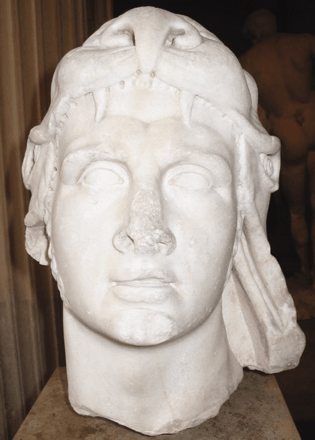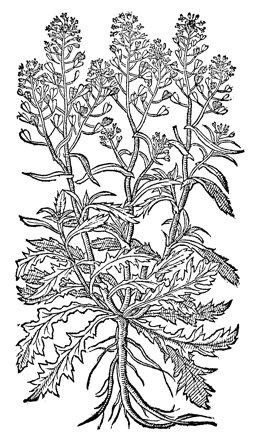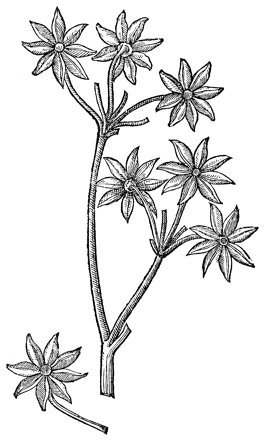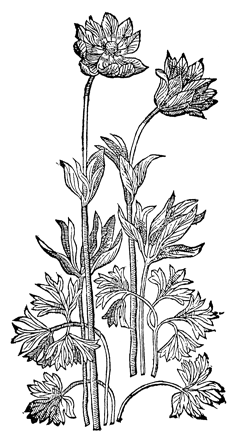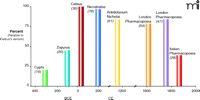The Pharmacology of Mithridatum: A 2000-Year-Old Remedy
Legend has it that Mithridates VI (d. 63 bce), King of Pontus on the Black Sea, made himself immune to poisons by taking an antidote of his own devising. For the next 2000 years, an antidote called “mithridatum” or “mithridatium” was included in materia medica and pharmacopoeia throughout Europe. In Mithridates’s day, “poison” and “antidote” had somewhat different connotations than they do today. A “poison” commonly referred to an extract of plants containing alkaloids such as henbane (hyoscyamine), wolf’s bane (aconitine), or poison hemlock (coniine). Venoms of poisonous animals were also included. “Antidotes” were sweet-smelling lotions and potions believed to antagonize poisons. A “poison” could also develop inside a person without exposure to poisonous plants or animals. Thus, it was thought that “systemic poisons” were present in illnesses and these could be ameliorated by the same antidotes.
Early in the nineteenth century, the attitude toward alkaloids changed; they became compounds of interest as drugs. Morphine was isolated from opium and its structure determined, followed by other alkaloids, including a number of atropine-related compounds. Until well into the twentieth century, the study of pharmacology focused on alkaloids, from d-tubocurarine to morphine, that acted on receptors in the nervous system, and the old antidotes were forgotten or dismissed. Recent studies on secondary metabolites in plants, however, have opened the possibility of examining the ingredients of the old antidotes for bioactivity.
History of Mithridatum
About 300 bce, Theophrastus wrote in his treatise on odors that a sweet-smelling mixture known as “megalium” could relieve the inflammation caused by any wound. Megalium contained five ingredients: A resin plus oil of balanos [(Balanites aegyptiaca), an Egyptian shrub], cassia, cinnamon, and myrrh (1). Centuries later, Plutarch described a similar mixture, called “Egyptian cyphi,” with some additional ingredients, that was used as an incense by priests in their rituals, as well as used as an unguent or potion (2). In the first century bce, Zopyrus, physician to King Ptolemy, in Alexandria, wrote a letter to Mithridates in which he described a remedy that included most of the ingredients in megalium and cyphi (3). Mithridates created the remedy now called mithridatum, possibly with the aid of his botanist-physician, Crataeus, and the earliest known formulae for mithridatum contain many of the ingredients suggested by Zopyrus plus some additional odoriferous plants.
About 100 years after the death of Mithridates, Celsus wrote down a formula for mithridatum (4) that included fifteen of the twenty plants in Zopyrus’s formula. Celsus proposed that the antidote was useful in serious conditions, such as a fall from a height or for internal pains, and was necessary against poisons in food or venomous bites. The recommended dose was an amount the size of an almond, to be taken daily. This mithridatum contained thirty-six ingredients, thirty-four of which were from plants (Table 1⇓). The other two components were honey, for mixing the ingredients, and castor (musk from beaver glands). Various musks were commonly used in perfumes and ointments to mask offensive odors, thus enhancing the overall aroma. Both non-plant ingredients were also used in six different versions of mithridatum reported by Galen (3).
In the second century ce, Galen, physician to Marcus Aurelius, created his own version and called it “theriac.” In his treatise on antidotes, Galen listed several versions: One by Aelius, used by Julius Caesar; one by Andromachus, physician to Nero; and one each by Antipater, Nicostratus, and Damocratis. Galen noted that the formula Zopyrus sent to Mithridates was useful against deadly poisons and for disorders of the stomach and bowels. He called the version prepared by Nicostratus “an incomparable antidote for all internal indispositions of the body” (3). These remedies were carefully prepared. The amount of each ingredient by weight was precisely stated. Recommendations for sequence of mixing, such as which ingredients were best ground together, were often included. Honey (and, occasionally, a little wine) was added at the end to make a good confection. The dose administered was expressed as volume relative to the size of a bean or nut. The list of ingredients was varied according to the physician’s preference. For example, the formulae given by Celsus and Andromachus were similar both in kinds of ingredients and in the amounts of each to be used. One of the main ingredients in Celsus’s formula was ginger—about 4.3% of the total weight of the formula. The same ingredient was one of the most plentiful by weight in Andromachus’s formula. In Nicostratus’s formula, however, this ingredient made up only 1.8 % of the total weight of seventy-eight ingredients.
In the following centuries, other versions appeared (Figure 1⇓). Some versions were called theriac, after Galen’s version, and usually contained even more ingredients than mithridatum. The Antidotarium Nicolai, a book of antidotes published in Salerno, Italy, in the mid twelfth century, contained a theriac boasting sixty-one ingredients (5). The London Pharmacopoeia of 1659 listed sixty-three ingredients in a version of mithridatum. This version was recommended as a general antidote for illnesses: “If your body be not in health, then take one dram or between one and two, according to age and strength” (6). In the next century, the number of ingredients in mithridatum in the London Pharmacopoeia had dropped to forty-seven (7). In the later versions of the book, plants more accessible in Europe were often substituted for some of the old plants from the Near East and Africa.
Interest in mithridatum gradually disappeared. By the nineteenth century, the version in the Italian Pharmacopoeia contained twenty-eight ingredients and was recommended only for dyspepsia (8). Mithridatum had failed as a remedy in many different conditions in which it was tried, such as plague and epilepsy. The growing interest in chemistry and the concern for specific remedies for specific diseases also contributed to the decline of mithridatum. In 1745, William Heberden, a London physician, wrote a treatise decrying the use of mithridatum or its variant, theriac, calling it “a heap of discordant simples” (9). In the late nineteenth century, Potter gave a formula for mithridatum, adding that it was of historical interest only (7). In the twentieth century, Sollman noted in his Manual of Pharmacology that some odoriferous drugs, such as assafoetida and valerian, used since antiquity, were often effective in emotional disorders, and suggested that the effect was through “olfactory reflexes” (10).
Plants Used in Mithridatum
Although mithridatum came to be considered a useless mixture of plants, examination of the list with our current knowledge of secondary metabolites of plant compounds and extracts gives a different picture. There must have been considerable effort made originally to select plants that contained ingredients believed to be useful remedies. The method of selection seems to have included plants in three categories: plants in which selected portions were very odoriferous; plants that had been shown by trial and error to have useful actions; and plants of the family Apiaceae (Umbelliferae), members of which are recognized by the characteristic shape of the flowering head (called an umbel). This family contains many plants that synthesize flavones and flavonols (11). Of the thirty-one plants listed in Table 1⇓, eight are members of the Apiaceae, a number not to be expected by random selection of odoriferous plants. In addition, none of the plants contain significant amounts of bioactive alkaloids. Even the wild poppy, Papaver rhoeas, does not contain opium alkaloids in any quantity, although opium was substituted for the European wild poppy in some of the later versions. Alkaloids were excluded because they were considered poisons. Many plants containing bioactive alkaloids were well known in antiquity, such as those containing atropine, aconitine, coniine, and the opium alkaloids.
Table 1⇓ lists thirty-one of the thirty-four plants in Celsus’s version. Three––Illyrian iris (Iris germanica), darnel (Lolium temulentum), and rhubarb (Rheum ponticum)––have been excluded because they were not commonly represented in other versions of mithridatum that were examined. [The scientific names of the plants have been taken from the translation by Spencer (4).] For each of the plants in Table 1⇓ a major secondary metabolite is listed that has been reported to have bioactivity, based on examination of the current scientific literature; the Table’s references are far from exhaustive. The intent is to provide a recent reference that suggests a possible explanation for the popularity of mithridatum for wounds, bruises, and gastrointestinal aliments in the historical period when mechanisms of drug action were unknown.
Evaluation of Mithridatum
The obvious characteristic of many plants in Table 1⇓ is that they are odoriferous and contain phenols or terpenes. In regard to bioactivity, the major characteristic is that their extracts, or secondary metabolites obtained from the plants, have been reported as reducing inflammatory responses through mechanisms that vary from scavenging free radicals to inhibiting the inflammatory cascade by blocking activation of nuclear factor κB (NF-κB). Chemicals in nine of the plants in Table 1⇓ have been reported to scavenge reactive oxygen species (ROS): sweet flag, lesser centaury, cinnamon, saffron, hypocistis, assafoetida, storax, poppy, and gallic rose. Other plants contain compounds that inhibit production of nitric oxide (NO) (i.e., myrrh, sweet rush, and costus), or inhibit production of inflammatory cytokines, (i.e., acacia, frankincense, parsley, and terebinth), or reduce inflammatory reactions by inhibition of platelet aggregation and lipid peroxidation (i.e., myrrh, cardamon, Indian nard, opopanax, long pepper, and hartwort). Four of the plants––Cretan carrot, parsley, anise, and opoponax––contain imperatorin, a furanocoumarin that has been shown to inhibit binding of the nuclear factor of activated T-cells (NFAT) to DNA. Costunolide and dehydrocostus lactone, found in costus, block activation of NF-κB, as do the gingerols in ginger root and 2-hydroxy cinnamaldehyde in cassia, thus reducing production of several components involved in the inflammatory response, such as inducible cyclooxygenase-2 (COX-2) (see Table 1⇓ for references).
Current information on plant defensive compounds suggests that anti-inflammatory effects might have resulted from taking mithridatum for certain kinds of illness. There are reports describing a positive relationship between serum levels of antioxidants and antioxidant enzyme levels associated with intake of plants or extracts (12, 13). This association supports the concept that some of these plants may be chemo-protective against oxidative stress–mediated disorders (14, 15). Local anti-inflammatory effects are also possible from topical use. For example, application of 6-gingerol to skin reduces COX-2 expression (16).
There are several difficulties, however, in evaluating a formula of mithridatum for anti-inflammatory activity; for example, the plant species for which data have been obtained in Table 1⇓ may not be identical in chemical content to species growing in different localities centuries ago, even if the identification of the species is correct. The methods of preparation of the plants after they were gathered might also have an effect on chemical constitution, and the degree of maturation of the plants at the time they were gathered may have affected the concentrations of secondary metabolites. The possibility that synergism exists among ingredients acting at the same or different loci is uncertain. The use of several plants containing chemicals affecting different portions of the inflammatory process may increase or decrease the likehood that the desired effects would be produced.
Conclusions
The change in character of mithridatum over the centuries is noteworthy. The formula examined here is one of the oldest and presumably closest to the one Mithridates concocted from his own knowledge and with the advice of Zopyrus. Later versions seem to have been less focused on ingredients with anti-inflammatory properties, perhaps arising from a lack of empirical evidence of effectiveness or through a desire to develop a new and “better” version. Later additions often were of animal tissues, such as dried blood and dried viper or lizard flesh (17). The idea seems to have been that some animals must be immune to their own poisons and that this immunity could be transferred. Additional plants were added and some old ones removed as plants more easily obtained in Europe were substituted for ones from the East. These changes might have diluted the effectiveness of bioactive ingredients in the original version, and it is not surprising that use of mithridatum disappeared by the end of the nineteenth century. There is no convincing evidence from the past that mithridatum was either useful or useless as a remedy for some conditions. It is true that each formula was carefully designed to produce a useful remedy by the standards of the period. Although modern copies of these formulae could be made and tested, these versions could not be proved to be the same as older versions because data on content of secondary metabolites in old varieties of plants cannot be obtained. Nevertheless, it is interesting to speculate about Theophrastus’s claim that megalium could have alleviated the inflammation from any wound, and it is possible that the early versions of mithridatum, such as the one reported by Celsus, were useful in some inflammatory conditions.
Plants Used in Mithradatum
- © American Society for Pharmacology and Experimental Theraputics 2006
References

Stata Norton, PhD, is an Emeritus Professor in the Department of Pharmacology, Toxicology, and Therapeutics, University of Kansas Medical Center, Kansas City, KS. She has published over 120 research articles, reviews, and book chapters on neuropharmacology and neurotoxicology, especially on the effects of drugs and radiation on the developing central nervous system. E-mail snorton{at}kumc.edu; fax (913) 588–7501.


